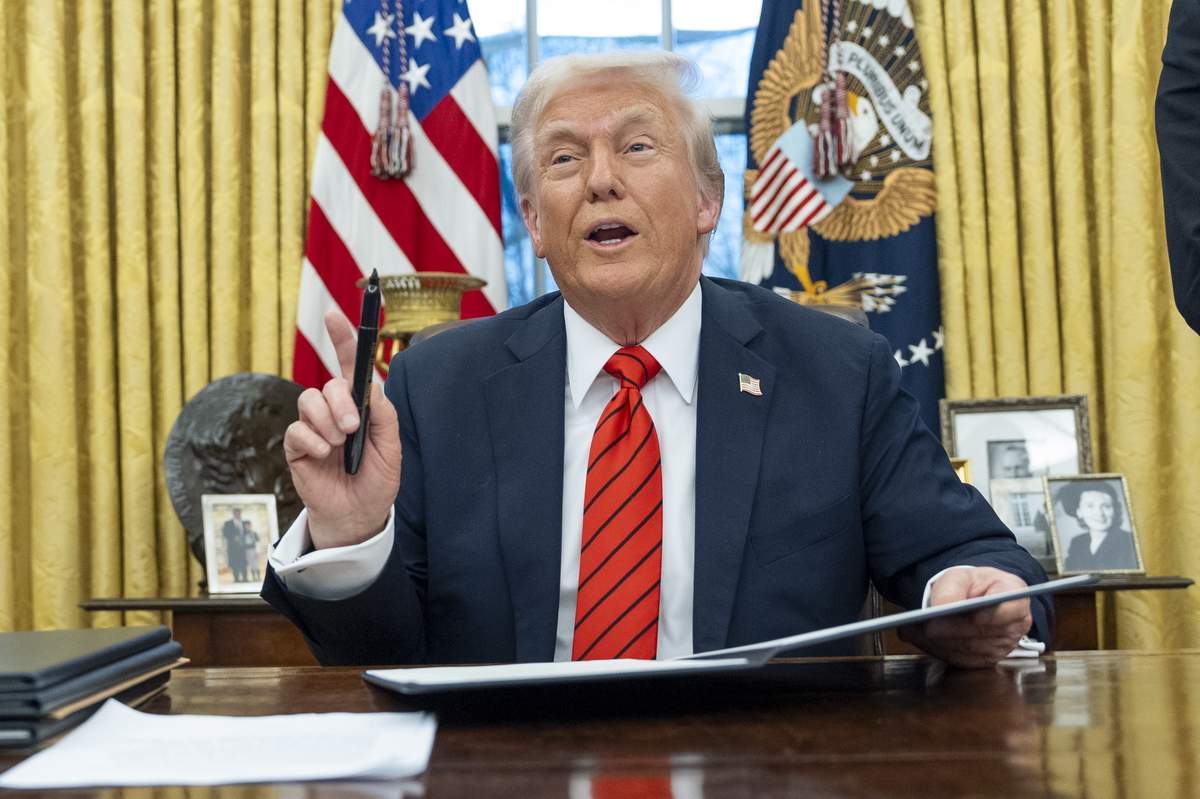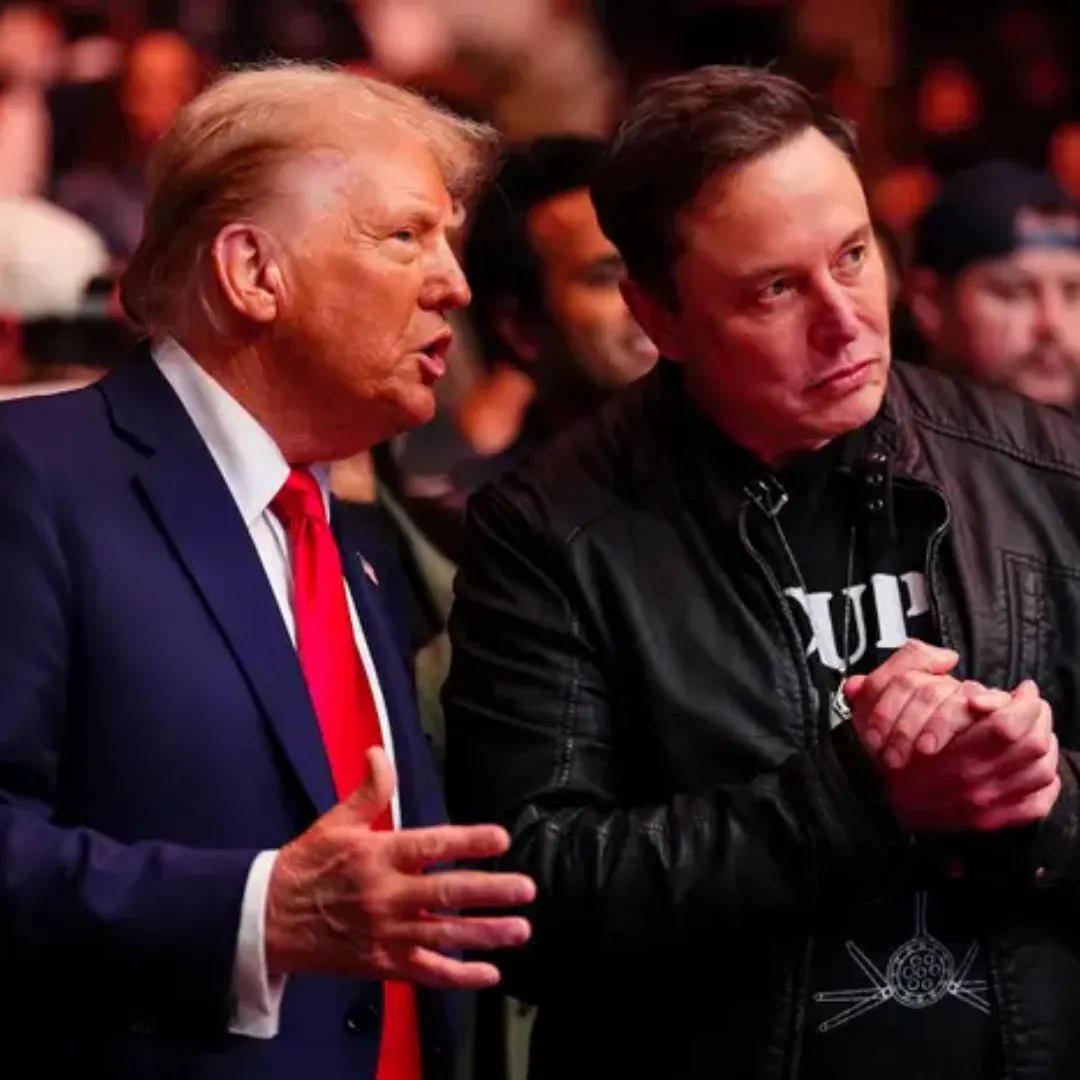
When President Donald Trump returned to the White House in January 2025, he promised a new era of ruthless fiscal discipline. Leading that charge was his unconventional appointee Elon Musk, tasked with heading the newly created Department of Government Efficiency — or DOGE — with the bold pledge to slash $2 trillion from the federal budget and restore accountability across bloated agencies.
Three months in, the results are in — and the math isn’t adding up.
According to new data released by the Treasury Department and first reported by The Wall Street Journal, the Trump administration has spent $155 billion more than President Biden did over the same period of his presidency.
That figure comes despite widespread government layoffs, mass office closures, and aggressive efforts to shrink federal departments across the board.
Even more damning: Musk’s DOGE, the administrative body supposedly overseeing America’s fiscal transformation, has only claimed savings of $150 billion. And economists say even that figure is deeply suspect.
“They’re spending more, not less, and they’re doing it while cutting services Americans rely on every day,” said Don Schneider, deputy head of U.S. policy at investment bank Piper Sandler. “It’s a classic case of the savings being overhyped and the costs being hidden — especially politically.”
Trump’s new tenure in office was meant to be the beginning of a leaner, tougher federal government. Musk, brought in as Trump’s budgetary bulldozer, came with Silicon Valley swagger and an original promise: eliminate inefficiencies, cut costs, and shrink the federal government’s footprint by an unprecedented $2 trillion.
Within weeks, thousands of federal workers were fired or forced into early retirement. Entire agency offices, including dozens within the Department of Education and the Environmental Protection Agency, were closed. Social Security offices were shuttered in low-population regions. Longstanding grant programs for arts, humanities, and housing were canceled outright.

The idea, Trump said at the time, was to save "real money, fast."
But in a cruel twist of arithmetic, the administration has now outspent Biden’s early presidency by a wide margin — despite the deep cuts and layoffs.
“The contradiction is striking,” said Maya Hollister, senior fellow at the Brookings Institution. “You’re watching an administration cut workers, cut benefits, cut access — and still spend more than the administration they criticized for being fiscally irresponsible.”
Elon Musk's management of DOGE has become emblematic of this confusion. Initially, Musk — who serves as CEO of Tesla, X (formerly Twitter), and multiple other ventures — claimed DOGE would save $2 trillion over four years.
Weeks later, he walked the figure back to $1 trillion. As of this month, Musk claims his office has saved only $150 billion — and independent analysts say even that number is riddled with accounting errors and exaggerations.
His posts on X, where he regularly shares “receipts” of DOGE’s achievements, have been met with skepticism, ridicule, and outright corrections from policy experts.
“When you’re including one-time layoffs as long-term savings and calling the elimination of unspent budget lines a ‘cut,’ you’re not operating in good faith,” said Dr. Lena Hoffman, an economist at Georgetown University. “It’s marketing, not budgeting.”
In one DOGE press release, the agency claimed that canceling an EPA research grant would “save $200 million annually.” In reality, the grant had been funded for only one year, and most of the money had already been disbursed.
Another Musk claim included savings from “preemptively eliminating future administrative bloat” — a phrase economists have struggled to define.
Ironically, some of DOGE’s so-called “savings” may actually increase costs — at least in the short term.
In several agencies, forced retirements and job buyouts have led to ballooning one-time expenditures. Severance packages, early pension claims, and contracting costs for outsourced services have all added up. In many cases, private contractors are now performing the same jobs — at higher hourly rates.

“It’s government by spreadsheet and ideology, not reality,” said a former senior official at the Department of Health and Human Services, who requested anonymity for fear of retaliation. “We’re seeing essential functions farmed out to consultants who cost twice as much and know half as much.”
Meanwhile, reduced staffing at the Social Security Administration has led to growing backlogs, increased wait times, and lawsuits — which could add additional expenses to the government’s legal docket.
“You can't fire your way to efficiency in programs designed to serve people,” said Martin O'Malley, the former SSA commissioner under Biden. “You end up spending more fixing the damage you created in the name of savings.”
The contradiction becomes even sharper when you factor in Trump’s ongoing push for a massive tax cut — one expected to cost the government an additional $5.7 trillion over the next decade.
Trump and congressional Republicans are preparing legislation for a $5 trillion package that would permanently extend the 2017 Trump-era tax cuts and add new breaks for corporations and high-income earners. Analysts say the plan would slash government revenues and accelerate the pace of national debt growth.
As of this month, the national debt sits at $37.3 trillion, with no sign of slowing.
According to the Treasury, some of the largest cost drivers remain unchanged or rising:
- Social Security: $1.5 trillion, boosted by cost-of-living increases and demographic shifts.
- Medicare: $865 billion.
- Defense: $807 billion, as Trump increases Pentagon funding for weapons procurement and base construction.
- Interest on the national debt: $881 billion — and climbing fast due to rising interest rates.
In total, mandatory spending (like Social Security, Medicare, and Medicaid) totaled $4.9 trillion last year. Discretionary spending — things like defense, education, and transportation — added another $1.8 trillion.
With rising interest payments and an aging population, the structural pressures on the budget are intensifying. And critics argue that Musk’s pursuit of “efficiency” ignores the underlying math.
To make matters worse for the administration, a significant number of DOGE’s planned cost-cutting measures have been blocked by court orders. Civil service unions and state attorneys general have successfully challenged the constitutionality of mass firings, agency closures, and even Musk’s own authority to make some of the changes he has claimed.
“DOGE is skating on very thin legal ice,” said Camille Rogers, a legal analyst with the nonpartisan watchdog group Government Integrity Project. “And it’s starting to crack.”
In one high-profile ruling last month, a federal judge halted the elimination of more than 4,000 positions at the Department of Housing and Urban Development, calling it “a reckless and legally dubious effort that threatens vulnerable Americans.”
In another case, a judge in California blocked DOGE’s plan to shut down eight regional Environmental Protection Agency offices, citing violations of the Administrative Procedure Act and the Endangered Species Act.
These legal defeats further call into question Musk’s alleged $150 billion in savings.
“If your ‘savings’ plan requires breaking the law to work, it’s not a savings plan. It’s a PR stunt,” said Rogers.
Democrats have seized on the new numbers to highlight what they call the “fiscal fraud” of the Trump-Musk regime.
“This is the biggest efficiency scam in American history,” House Minority Leader Hakeem Jeffries said at a press conference Tuesday. “They’re breaking things, hurting families, and still spending more than we did. What exactly are they ‘saving’?”
President Biden, now a private citizen, also weighed in earlier this week during his speech at the ACRD conference in Chicago.
“They claim they’re saving money by gutting Social Security and laying off good public servants,” Biden said. “But take a look at the numbers. They’re blowing up the debt — just with fewer people to answer the phones.”
Republican leadership, for their part, has defended the approach. “You can’t turn around a decades-old bureaucracy overnight,” said House Speaker Elise Stefanik. “We are laying the groundwork for long-term reform. That’s what DOGE is about.”
Three months into the new administration, a clear pattern is emerging. What began as a cost-cutting crusade has morphed into a chaotic and expensive restructuring effort — one that may yield little in long-term savings, but carries major political and economic consequences.
DOGE’s reputation, once hailed as visionary by conservative outlets and MAGA loyalists, now stands on shakier ground.
“This was supposed to be a revolution in government efficiency,” said economist Lena Hoffman. “Instead, it’s become a cautionary tale in magical thinking — and in the danger of confusing tech disruption with public service.”





